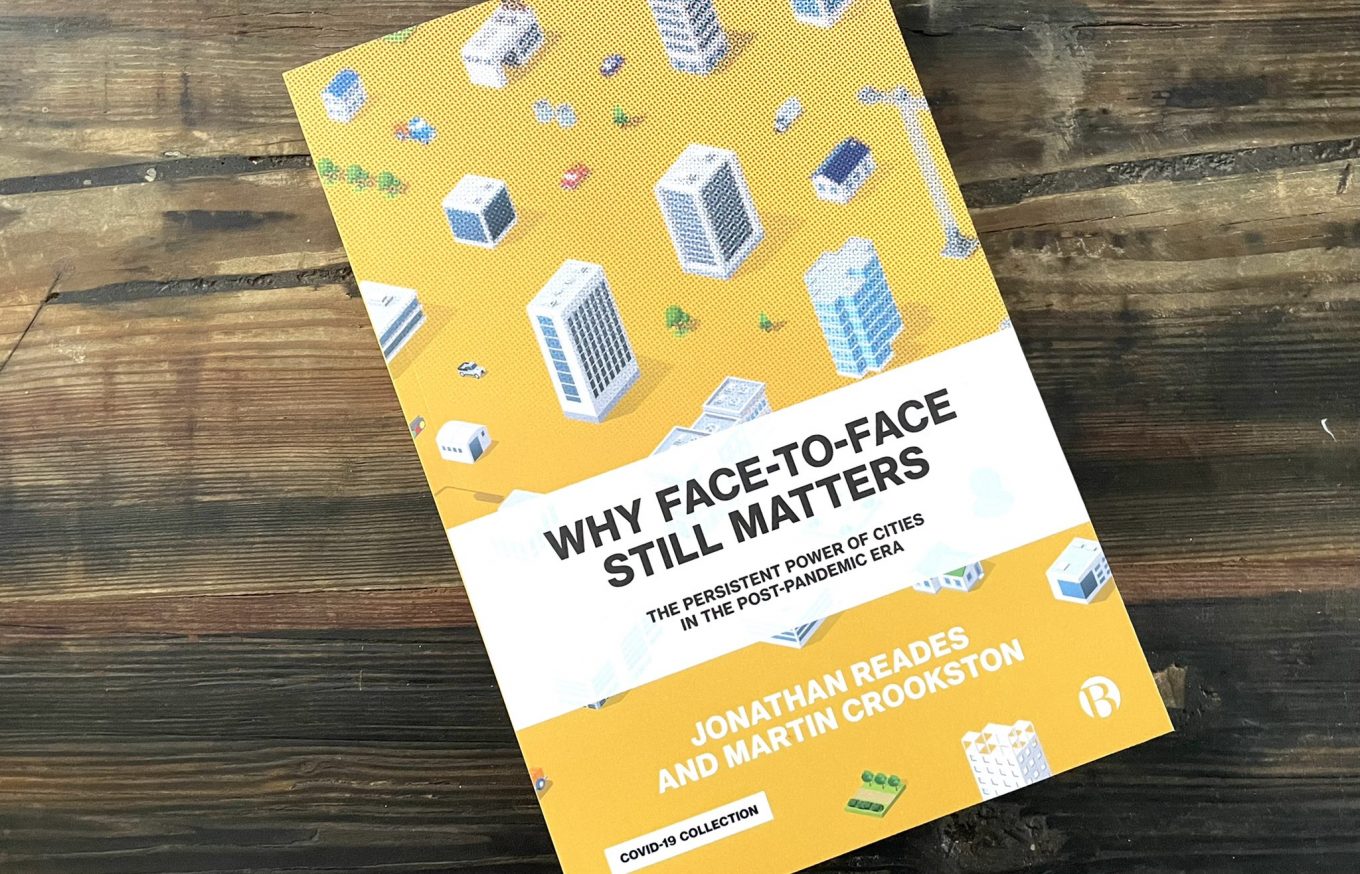 Following the article by Martin Crookson last month Steve Bee reviews his book ‘Why Face to Face Still Matters’ written with Jonathan Reades.
Following the article by Martin Crookson last month Steve Bee reviews his book ‘Why Face to Face Still Matters’ written with Jonathan Reades.
I remember having a standing conversation with someone I vaguely knew over lunch at the Academy’s 10th Anniversary Congress in The Crystal at the Royal Docks in London. It was one of those conversations you find yourself in occasionally when the importance of the point at issue is entirely shared, but you come at it from different starting points. The result is intensely rewarding – your perspectives are mutually reinforcing and solutions, or at least obstacles in the way of solutions, come into sharp focus. You also get a selection of the other person’s store of favourite statistics, case studies and quotations to add to your own.
During this conversation I was strongly aware of the hubbub around us – from the hundreds of people surrounding us in similarly enthusiastic conversations. It was noisy, but most of all it was happy – excited even. This atmosphere made our particular conversation seem that much more relevant. Of course, as with most conversations, much of our wisdom quickly evaporated but that didn’t – doesn’t – matter. The fact that I can recall the event, and the sensation, has helped to reinforce my sense of being involved and engaged. It was the buzz (no nominative determinism here) of the event that was so stimulating and memorable.
Why face to face still matters concludes that this buzz is an essential component of urban economies. The book is not only about face-to-face communication, but its gestation is an example of it, as the Introduction explains. The book’s style is conversational, witty (I laughed out loud at one point) while authoritative and persuasive. It is well-referenced and illuminated throughout with apposite quotes and statistics.
The fact that Covid 19 spread across the World just as the first draft of the book was circulated adds an additional dimension to its argument. It’s difficult to reflect on a crisis while you’re still in the thick of it, but Reades and Crookston use it to interrogate the trends they were observing before it arrived.
Why face to face still matters is mainly about big city economies, and three World Cities in particular; London, New York and Paris, and of those mainly London. It draws on the experience and research of the two authors and especially their years working with the late Sir Peter Hall. It also draws on around 40 interviews across these cities with professionals and academics in what the book generally describes as ‘high-touch businesses’, where ‘uncertainty’ in and ‘opacity’ of the traded commodities require ‘judgement’ of and ‘confidence’ in the practitioners.
It is also, inevitably about communications; ICT, big data, AI, bandwidth and all that; and the physical and virtual networks on which businesses depend. It is thus also mainly about business; investment, risk, returns, employment and all that. But the book’s scope is broad, panoptic even, and just as a passage raises a question in your mind – “yes, but what about…”, the authors have anticipated the point and offer an example of relevance.
pandemic has accelerated our adoption of virtual media for communication while demonstrating its limitations
The lessons and implications of the book’s discourse are not restricted to metropolitan application. The book acknowledges the importance of urban scale, weight and gravity, and the agglomeration and dispersal theories of Weber and Christaller, but the authors also test their applicability to smaller places within the influence of the big three, and to yet others beyond.
These urban examples help to illustrate the role of location economics in managing risk, and urbanism economics in managing uncertainty. I remember Tom Bloxham saying, in the early years of Urban Splash, that the last thing he sought was certainty. It was the adherence of established developers to low margins in a reliable market that gave Urban Splash a free hand in unreliable opportunities, until others caught on. Big data, algorithms and AI improve our ability to exploit known and emerging markets more efficiently, but new opportunities arguably less so.
The book concludes that the pandemic has accelerated our adoption of virtual media for communication while demonstrating its limitations. As one of the interviewees commented, regarding online meetings; “you don’t actually look into people’s eyes, you look at their faces”.
Being able to look into people’s eyes to build confidence and test judgement will remain, argue Reades and Crookston, central to the function of urban concentrations. The scale and value of business opportunities in different sectors will influence where they take place, and thus influence the distinctive character of different places. We talk a lot about local distinctiveness, but mainly in relation to the built environment. Perhaps it is at least as much in the nature of human engagement.
The emphasis of the book is on private business, and the market for services provided by people like us. So it is a useful re-presentation of a familiar story in accessible language – for us. How well it would inform a neighbourhood plan for Burslem, or town centre management in Wisbech is more difficult to predict. But for those of us who might have to make the case for urban investment in such milieux, it is a rich resource and an eloquent guide.
The relevance of the ‘public’ sector to urban economies is acknowledged by the authors through the examples used, and there’s a nod to economies other than the market one, but the book presumes that the path dependency of the past will resume, post-pandemic. Might our current dependence on public funding and services redirect that path towards a more equitable and stable economy in the future? We shouldn’t let the opportunity pass.
The book’s conclusion after 250 pages might be obvious from its title, but the route to it draws in economic theory, empirical evidence, anecdote and opinion from around the World – just like an Academy event. And just like the buzz of an Academy event, it is a rich and rewarding experience.
WHY FACE TO FACE STILL MATTERS: The Persistent Power of Cities in the Post-Pandemic Era by Jonathan Reades and Martin Crookston is published by Bristol University Press 2021.
Steven Bee AoU is a former chair of The Academy of Urbanism and Principal of Steven Bee Urban Counsel.






